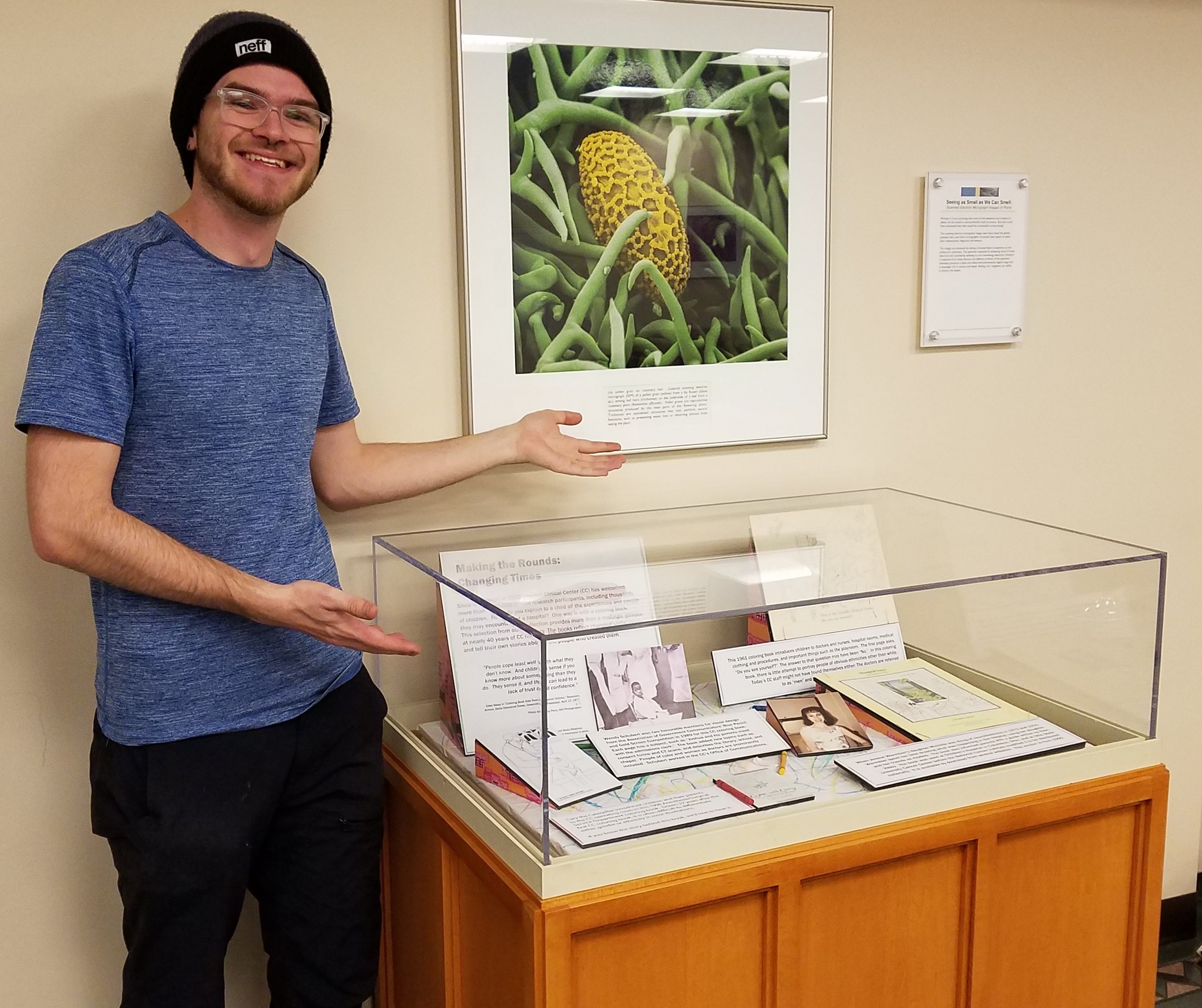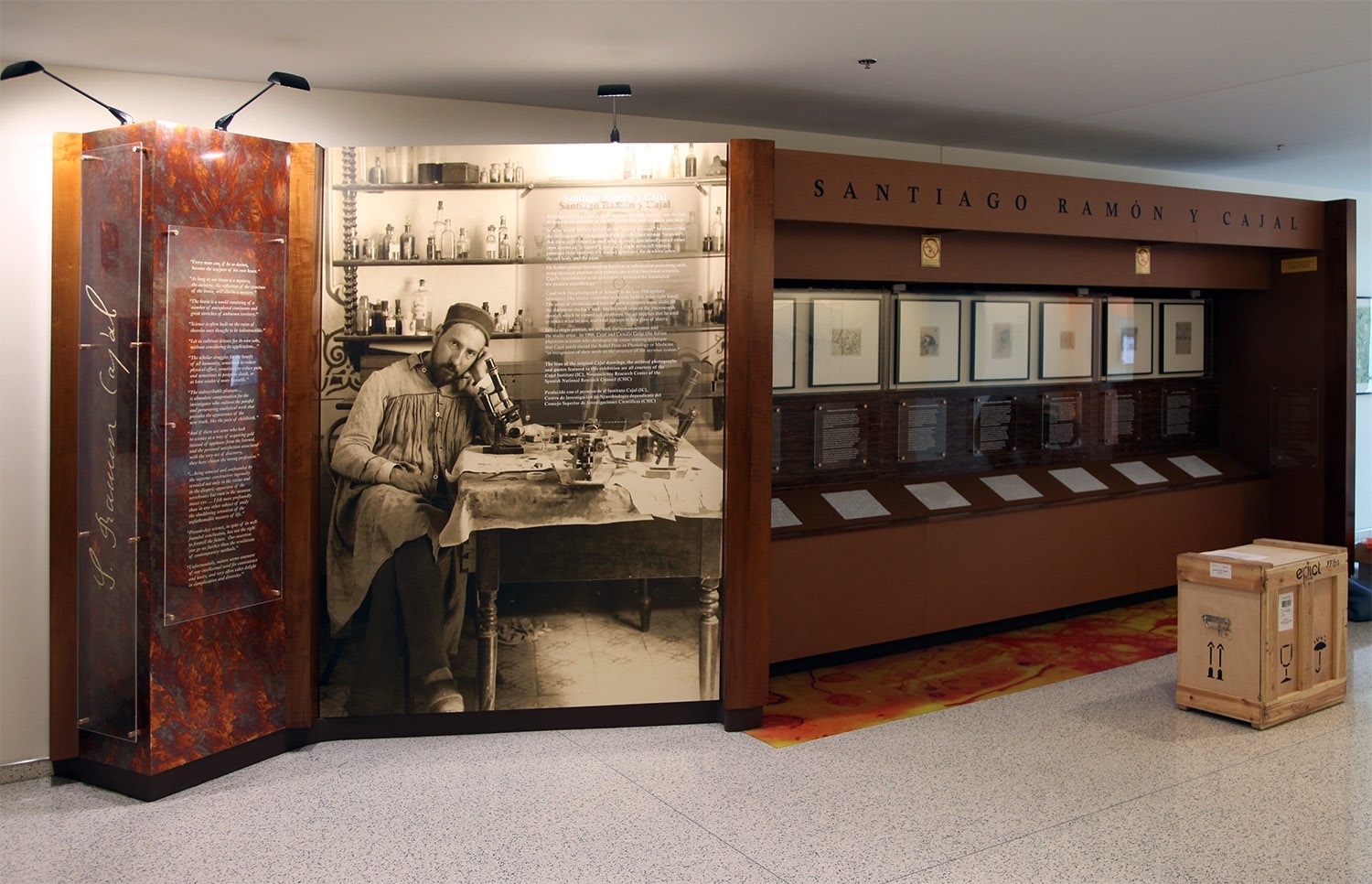The Museum uses a variety of methods such as virtual and physical exhibits, social media, and publications to make this history available to the public and to historical researchers.
Michael Potter Exhibit
“In the 1950s, a ferment of new theoretical ideas on the cellular and genetic basis of antibody formation electrified the field of immunology and began a new age in experimentation. Two problems dominated the thoughts of scientists during most of this decade—the cellular basis of antibody formation (how did it work?) and the genetic basis of antibody diversity (how could the genes in one individual generate antibodies for the thousands and thousands of antigens?). …The pace of research was remarkable. One bridge between fields such as immunology, cancer research, protein chemistry, and molecular biology was the plasma cell.”
—Michael Potter “The Early History of Plasma Cell Tumors in Mice, 1954-1976.”
Christian Boehmer Anfinsen
n the spring of 1959, a little-known biochemist at the National Heart Institute of the National Institutes of Health in Bethesda, Maryland, named Christian Anfinsen, sent an ambitious manuscript to the respected academic publisher John Wiley & Sons. They were clearly impressed. The resulting book published just a few months later, titled The Molecular Basis of Evolution, was the first rigorous attempt to integrate the newly developing field of protein chemistry with the classical concepts of genetics. Anfinsen stated in his preface, that “Everyone in science must be interested in the evolutionary process as the central theme of biology.”
Michael Potter Exhibit
“In the 1950s, a ferment of new theoretical ideas on the cellular and genetic basis of antibody formation electrified the field of immunology and began a new age in experimentation. Two problems dominated the thoughts of scientists during most of this decade—the cellular basis of antibody formation (how did it work?) and the genetic basis of antibody diversity (how could the genes in one individual generate antibodies for the thousands and thousands of antigens?). …The pace of research was remarkable. One bridge between fields such as immunology, cancer research, protein chemistry, and molecular biology was the plasma cell.”
—Michael Potter “The Early History of Plasma Cell Tumors in Mice, 1954-1976.”
Christian Boehmer Anfinsen
n the spring of 1959, a little-known biochemist at the National Heart Institute of the National Institutes of Health in Bethesda, Maryland, named Christian Anfinsen, sent an ambitious manuscript to the respected academic publisher John Wiley & Sons. They were clearly impressed. The resulting book published just a few months later, titled The Molecular Basis of Evolution, was the first rigorous attempt to integrate the newly developing field of protein chemistry with the classical concepts of genetics. Anfinsen stated in his preface, that “Everyone in science must be interested in the evolutionary process as the central theme of biology.”
Oral Histories
Maybe replavce image with a user macro in order to get the image class <img class="usa-media_block-img" src="/assets/img/circle-124.png" alt="Alt text">
The DeWitt Stetten, Jr., Museum of Medical Research
Lorem ipsum dolor sit amet, consectetur adipiscing elit. Aliquam fermentum vestibulum est. Cras rhoncus. Pellentesque habitant morbi tristique senectus et netus et malesuada fames ac turpis egestas. Sed quis tortor. Donec non ipsum. Mauris condimentum, odio nec porta tristique, ante neque malesuada massa, in dignissim eros velit at tellus. Donec et risus in ligula eleifend consectetur. Donec volutpat eleifend augue. Integer gravida sodales leo. Nunc vehicula neque ac erat. Vivamus non nisl. Fusce ac magna. Suspendisse euismod libero eget mauris. Ut ligula. Maecenas consequat. Aliquam placerat. Cum sociis natoque penatibus et magnis dis parturient montes, nascetur ridiculus mus. Nulla convallis. Ut quis tortor. Vestibulum a lectus at diam fermentum vehicula. Mauris sed turpis a nisl ultricies facilisis. Fusce ornare, mi vitae hendrerit eleifend, augue erat cursus nunc, a aliquam elit leo sed est. Donec eget sapien sit amet eros vehicula mollis. In sollicitudin libero in felis. Phasellus metus sem, pulvinar in, porta nec, faucibus in, ipsum. Nam a tellus. Aliquam erat volutpat. Sed id velit ut orci feugiat tempus. Pellentesque accumsan augue at libero elementum vestibulum. Maecenas sit amet metus. Etiam molestie massa sed erat. Aenean tincidunt. Mauris id eros. Quisque eu ante. Fusce eu dolor. Aenean ultricies ante ut diam. Donec iaculis, pede eu aliquet lobortis, wisi est dignissim diam, ut fringilla eros magna a mi. Nulla vel lorem. Donec placerat, lectus quis molestie hendrerit, ante tortor pharetra risus, ac rutrum arcu odio eu tortor. In dapibus lacus nec ligula. Aenean vel metus. Nunc mattis lorem posuere felis. In vehicula tempus lacus. Phasellus arcu. Nam ut arcu. Duis eget elit id eros adipiscing dignissim.
70 Acres of Science
The National Institute of Health Moves to Bethesda
Michele Lyons - Curator, National Institutes of Health DeWitt Stetten Jr., Museum of Medical Research
The NIH is the biomedical research organization of the federal government. Why is a government agency located in Bethesda, apparently masquerading as a university? The simple answer is that in the late 1930s, the NIH needed more room and a wealthy couple donated some of their land. The more complex answer involves domestic politics, social reform, international relations, economic depression, scientific advances, and personal ambitions.
Download: 70acresofscience.pdf (12.3 MB)
A journey into NIH's past…and present
New display cases have been installed around campus. Read a comic book about Joseph Goldberger’s work in pellagra in the early 20th century at the Building 1, 3rd floor case. Be amazed at the variety of Clinical Center patches near the Hospitality Desk on the 1st floor of the Clinical Center. Think about the social context of coloring books from the Clinical Center by its 2nd floor cafeteria. And salute a leading woman investigator, Dr. Margaret Pittman, in the Building 60 lobby. Two cases are coming to the Vaccine Research Center, and one to Building 6.
Read More
Current set of seven neuroanatomy drawings by Santiago Ramón y Cajal will remain on rotation in Building 35.
Santiago Ramón y Cajal Exhibit
Current set of seven neuroanatomy drawings by Santiago Ramón y Cajal will remain on rotation in Building 35.
Social Media
Tweets by historyatnihOral histories are added on a regular basis.






